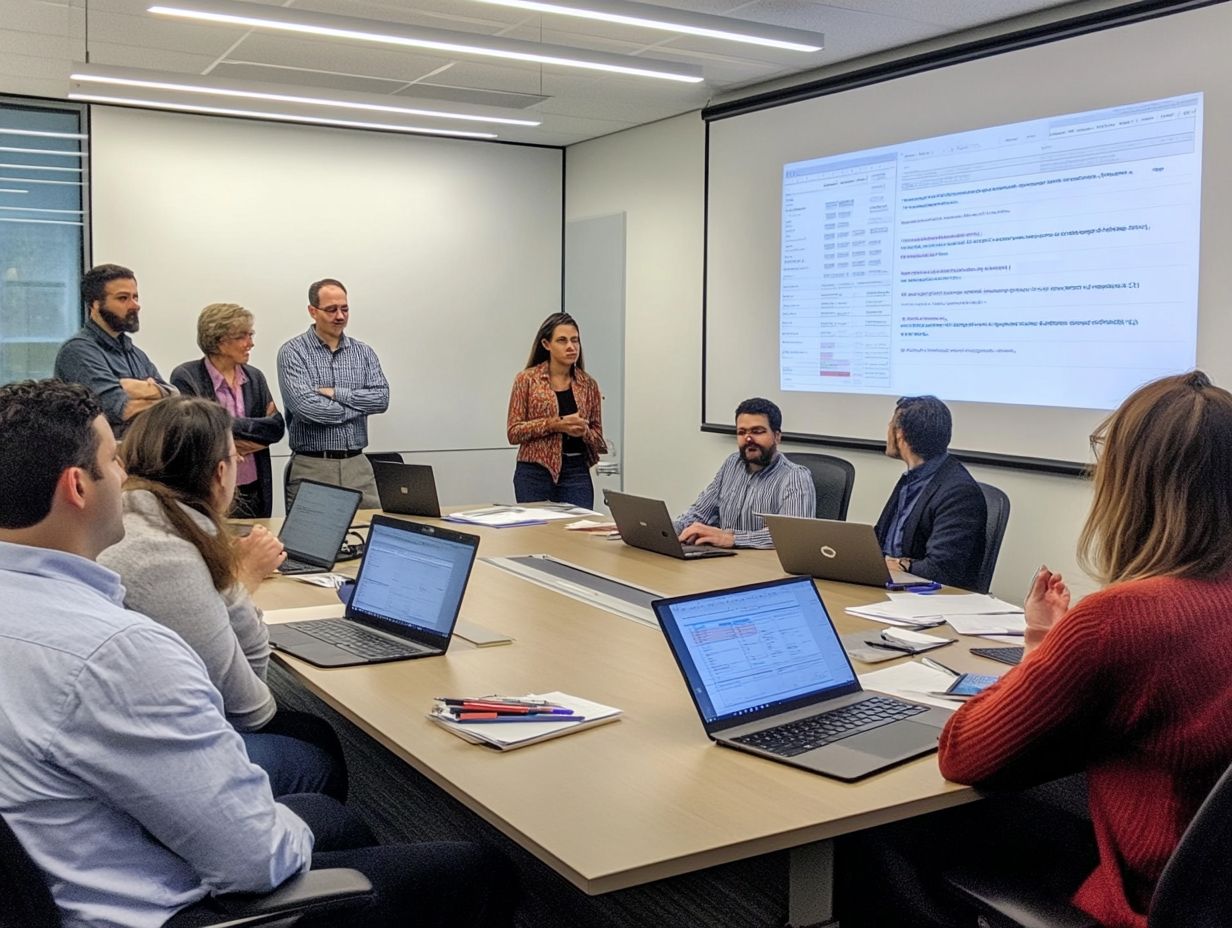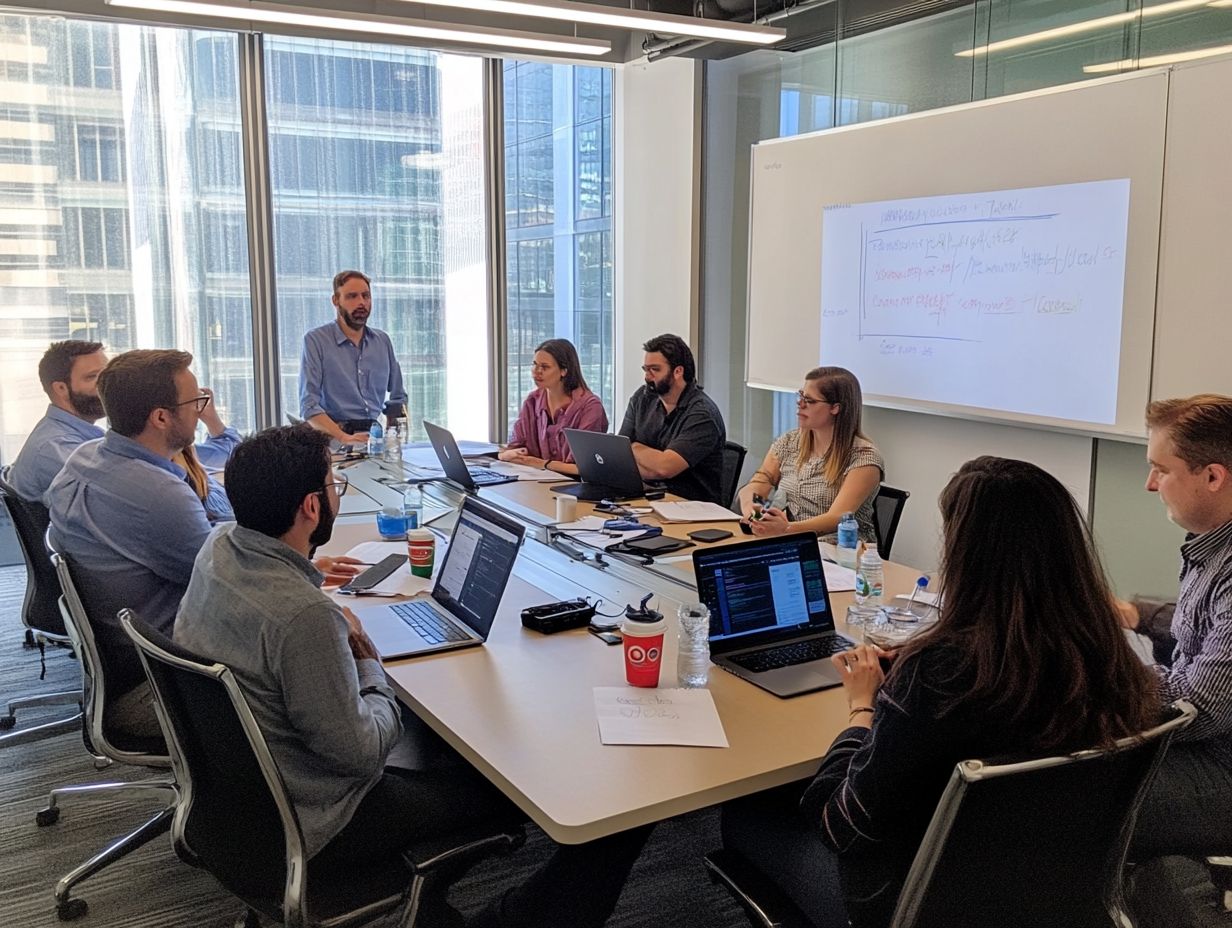how to reduce compliance costs in cybersecurity
Managing compliance costs in cybersecurity is vital for protecting sensitive information. Understanding the rules surrounding these compliance costs is crucial for your success.
This discussion covers typical expenses tied to cybersecurity compliance and effective strategies to alleviate these costs. It also highlights the benefits of a budget-conscious approach.
You ll find best practices designed to help your organization stay compliant without straining your finances. Discover how to strengthen your cybersecurity posture while saving money.
Contents
- Key Takeaways:
- The Importance of Reducing Compliance Costs in Cybersecurity
- Common Compliance Costs in Cybersecurity
- Top Strategies to Cut Compliance Costs Now!
- Why You Should Reduce Compliance Costs Today!
- Best Practices for Keeping Compliance Costs Down
- Frequently Asked Questions
- How can implementing automation help reduce compliance costs in cybersecurity?
- What role does risk assessment play in reducing compliance costs in cybersecurity?
- How can regular training and education for employees help reduce compliance costs in cybersecurity?
- What are some cost-effective ways to ensure compliance with cybersecurity regulations?
- How can outsourcing certain cybersecurity tasks help reduce compliance costs?
- What are some long-term strategies for reducing compliance costs in cybersecurity?
Key Takeaways:

Cut compliance costs to boost your financial health and security. Identify common expenses to understand the impact of compliance costs, and implement cost-effective solutions. For further insights, consider understanding compliance in cybersecurity to sustain low compliance costs by adopting best practices and regularly reviewing these measures.
The Importance of Reducing Compliance Costs in Cybersecurity
In today’s fast-paced digital environment, minimizing compliance costs in cybersecurity is critical. Understanding the benefits of cybersecurity compliance ensures you meet regulatory requirements while dealing with the constant threat of cyber attacks.
As compliance costs rise, it s essential to balance robust compliance with operational efficiency. Effective compliance management protects you from financial penalties and strengthens your overall risk management strategy.
With automation technologies, you can streamline compliance processes, leading to significant cost savings and improved financial controls.
Understanding the Impact of Compliance Costs
Understanding compliance costs is essential as you navigate the regulatory landscape with confidence.
While meeting evolving legal requirements, you ll encounter significant financial implications due to non-compliance. These penalties can drain valuable resources, making it crucial to conduct risk assessments that identify potential exposure areas.
By addressing compliance-related vulnerabilities, you can implement management strategies that reduce costs and bolster operational resilience.
Adhering to regulations isn t just about avoiding fines; it s an investment in your business’s overall health and sustainability.
Common Compliance Costs in Cybersecurity
Compliance costs in cybersecurity can vary significantly between organizations, influenced by factors like industry and size, especially when considering the cost of non-compliance in cybersecurity.
These expenses typically include compliance audits, incident management, and proactive measures to prevent data breaches. Invest in compliance strategies that meet immediate regulatory obligations and enhance long-term operational efficiency.
Don t overlook the technology risks associated with keeping security measures current and performing regular audits. Understanding these common compliance expenses is vital for effective financial planning and strong risk management.
Identifying and Assessing Common Expenses

Identifying and assessing common compliance expenses can reveal areas for streamlining efforts and reducing overall costs.
By focusing on these financial outlays, you can uncover inefficiencies related to compliance audits, employee training, and data privacy measures.
A thorough evaluation of training expenses may reveal opportunities to implement effective programs, enhancing employee knowledge without overspending.
Understanding audit costs allows you to adopt proactive strategies that minimize disruptions and financial strain.
This comprehensive evaluation not only fosters better financial control but also strengthens operational efficiency, ensuring that your resources are allocated wisely.
Top Strategies to Cut Compliance Costs Now!
Cutting compliance costs is vital for organizations. It helps balance meeting regulations and running efficiently.
By focusing on these strategies, you can streamline processes and enhance performance while meeting necessary regulations.
Implementing Cost-Effective Solutions
Cost-effective solutions in compliance management can lighten your financial load while keeping you compliant.
Integrate smart training programs to build a culture of awareness among employees. This reduces non-compliance risks and boosts efficiency with tools like automated tracking systems.
As you evaluate and refine your compliance strategies, you stay ahead of evolving regulations and bolster your operational resilience.
Ongoing education ensures your compliance efforts are vital to your organizational excellence.
Why You Should Reduce Compliance Costs Today!
Reducing compliance costs offers benefits that go beyond simple financial savings. It enhances overall cybersecurity and highlights the importance of compliance in cybersecurity strategy, ultimately strengthening operational resilience.
Improving Overall Cybersecurity and Cost Savings

Boosting cybersecurity while saving money is essential. Weave cost-saving measures into your cybersecurity efforts to enhance efficiency and prevent breaches.
This smart integration lets you allocate your resources effectively, focusing on high-impact areas that can prevent breaches before they happen.
By cultivating a proactive security posture, your organization can respond swiftly to potential threats and minimize disruptions. This approach safeguards sensitive data and builds stakeholder trust, fostering a culture of security awareness.
Best Practices for Keeping Compliance Costs Down
To maintain low compliance costs, adopt a strategic approach that enhances both efficiency and effectiveness in your compliance solutions.
This methodology ensures that you meet regulatory requirements while optimizing resources and minimizing expenditure.
Tips for Sustaining Cost-Effective Measures
Commit to ongoing training and monitoring to sustain cost-effective measures. Foster a culture of continuous risk management to address potential issues early.
Regularly review and update your compliance training programs to reflect the latest regulations and best practices. Incorporate real-world scenarios to enhance understanding among your employees.
Leverage technology to automate compliance tracking, simplifying your processes and making it easier to monitor your compliance status.
Engaging leadership fosters accountability and encourages a commitment to uphold high compliance standards while keeping costs in check.
Frequently Asked Questions
How can implementing automation help reduce compliance costs in cybersecurity?

Automation can reduce compliance costs by streamlining and automating routine tasks, such as conducting vulnerability scans and patching systems. Understanding the evolution of cybersecurity compliance also helps in implementing effective strategies. This not only saves time and resources but also minimizes human error, reducing compliance violations and associated costs.
What role does risk assessment play in reducing compliance costs in cybersecurity?
Risk assessment is key to cutting compliance costs in cybersecurity. It helps organizations pinpoint critical threats and vulnerabilities, allowing them to allocate resources effectively.
How can regular training and education for employees help reduce compliance costs in cybersecurity?
Regular training is essential for lowering compliance costs. By teaching employees best practices for data security, organizations can significantly reduce the risk of costly compliance violations.
What are some cost-effective ways to ensure compliance with cybersecurity regulations?
One effective way to ensure compliance is through a compliance management system. This tool helps organizations track efforts, identify gaps, and implement necessary controls.
How can outsourcing certain cybersecurity tasks help reduce compliance costs?
Outsourcing tasks like compliance monitoring can be a smart way to save costs. By partnering with a trusted third-party provider, organizations can reduce in-house resource needs.
What are some long-term strategies for reducing compliance costs in cybersecurity?
Implementing a proactive cybersecurity risk management program is crucial for long-term savings. Continuous monitoring helps organizations catch potential issues early, avoiding costly penalties.






